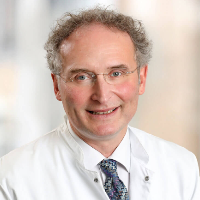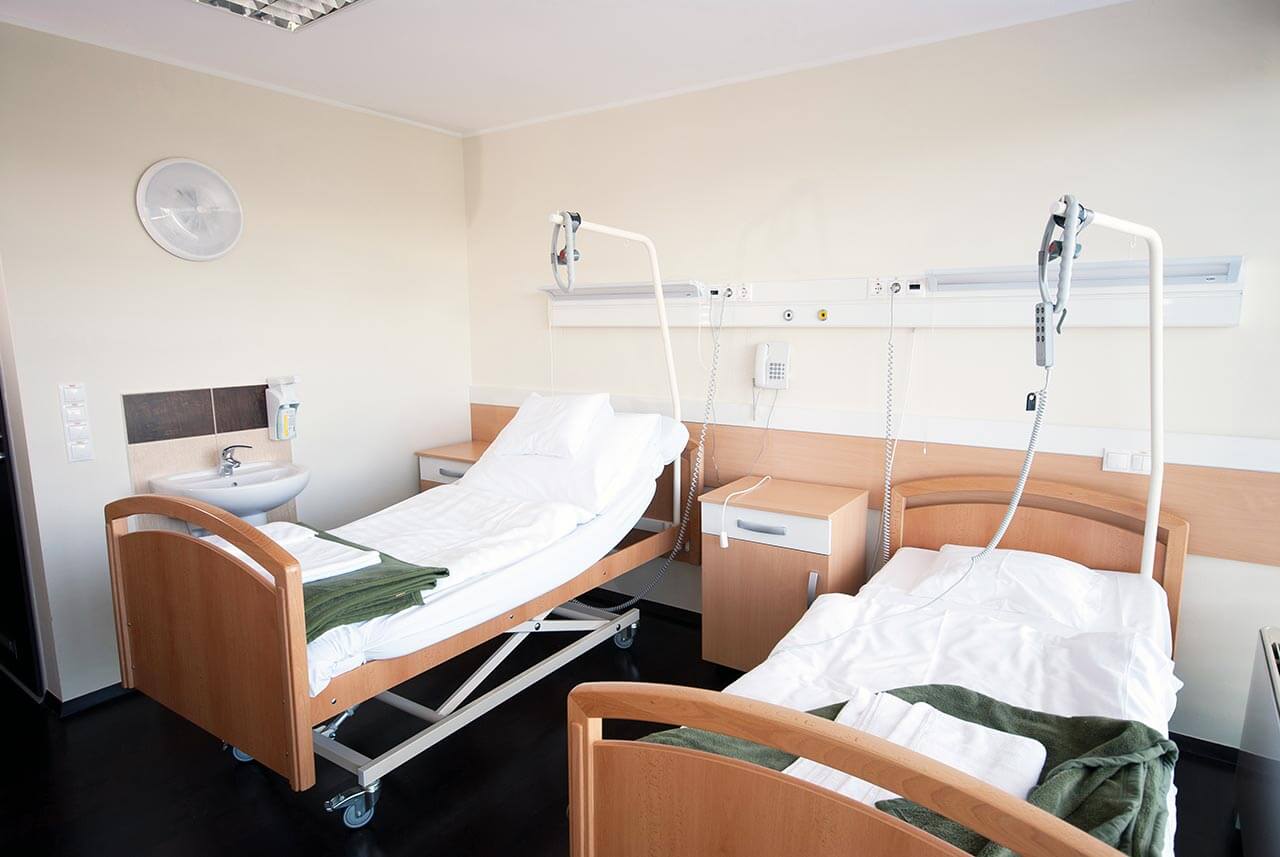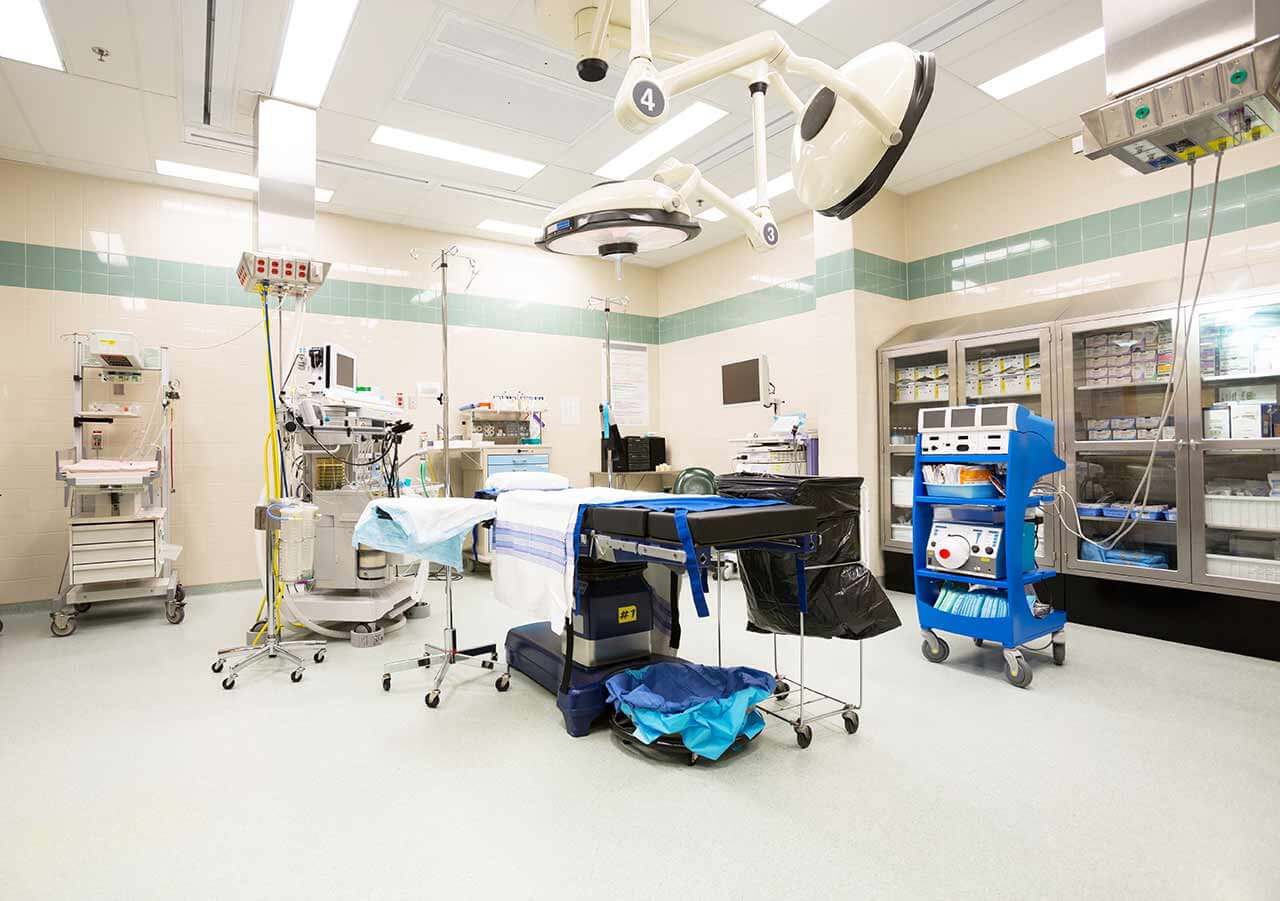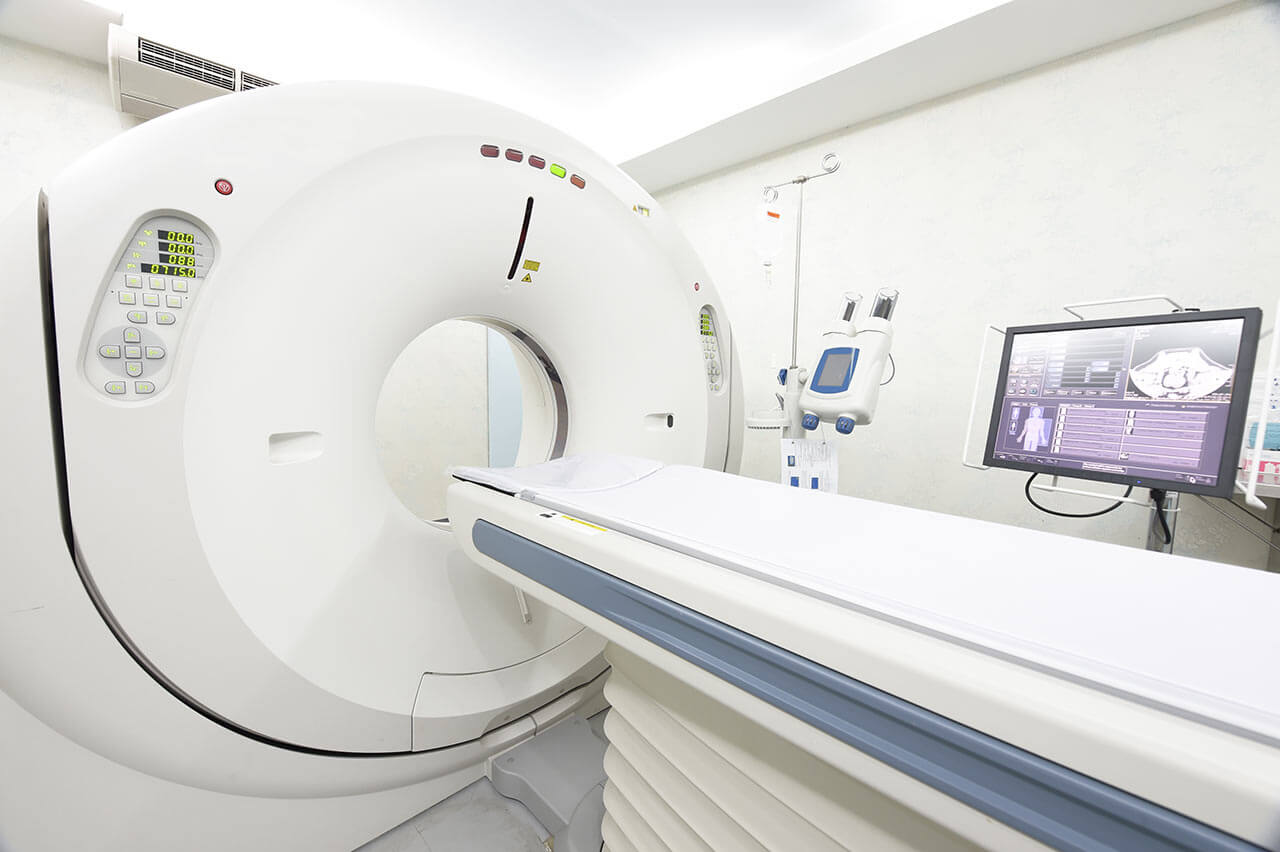
The program includes:
- Initial presentation in the clinic
- clinical history taking
- physical examination
- review of medical records
- laboratory tests:
- complete blood count
- general urine analysis
- biochemical analysis of blood
- indicators of inflammation
- indicators blood coagulation
- x-ray examination
- CT/MRI scan
- preoperative care
- hip replacement
- symptomatic treatment
- control examinations
- physiotherapeutic procedures
- orthopedic appliances
- the cost of essential medicines and materials
- nursing services
- full hospital accommodation
- explanation of future recommendations
How program is carried out
Preliminary preparation for hip replacement includes quitting smoking and drinking alcohol; cancelling non-steroidal anti-inflammatory drugs (diclofenac, ibuprofen); cancelling anticoagulants (warfarin); normalization of body mass, if possible.
Preoperative examination, including consultation with an anesthesiologist and necessary related specialists, takes 1-2 days. According to its results, the most suitable endoprosthesis is selected.
Hip replacement. The operation is performed under general anesthesia. The patient lies on his side, the affected leg is bent and fixed in this position. The surgeon makes an incision 15-20 cm long, minimally traumatizing the muscles and nerve endings. Through this incision, miniature instruments are inserted to remove the damaged joint structures. Healthy bone is adjusted for further reliable implant fixation.
The surgeon installs a femoral stem in the center of the upper part of the femur. Ball-shaped head of the joint is fixed on it. The surgeon also implants a special liner that facilitates movement of the leg and protects the structures of the prosthesis. After the primary fixation of the prosthesis components, the doctor assesses the joint range of motion, as well as the length and symmetry of the lower limb.
The implant is fixed with cement or cementless method. The doctor treats the operating field with antiseptics, conducts its final revision and sutures the wound layer by layer. A temporary drainage is installed in the joint, and a bandage is applied on top.
Postoperative care. During the first day after the intervention the patient stays in the intensive care unit, under round-the-clock medical supervision. After that, with a smooth course of the postoperative period, the patient is transferred to a regular ward and the drains are removed. The range of motion expands gradually, from light toes movements to walking. Walking with the use of walking aids is allowed in 3-5 days after the operation.
Required documents
- Medical records
- X-ray examination, MRI/CT scan (if available)
Service
You may also book:
 BookingHealth Price from:
BookingHealth Price from:
About the department
The Department of Pediatric Orthopedics and Trauma Surgery at the Helios Hospital Emil von Behring Berlin Zehlendorf offers the full range of medical services in its areas of specialization. The department's doctors treat diseases and injuries of the musculoskeletal system in children aged 0 to 18 years. The orthopedic team of the healthcare facility focuses on young patients with congenital and acquired malformations of the feet, lower extremities, and spine. Children with injuries to the skeleton, joints, tendons, and muscles can also receive medical care here. Surgical procedures to remove bone cysts and tumors are an integral part of the department's daily clinical practice. In addition, the department has gained impressive experience in the treatment of neuro-orthopedic diseases in children, with a special emphasis on cerebral palsy, spina bifida, Duchenne muscular dystrophy, Down syndrome, and Rett syndrome. When planning the treatment of orthopedic diseases in children, doctors always take into account the age of the child and the characteristics of the development of the musculoskeletal system at this age. Whenever possible, specialists perform conservative therapy. If a young patient needs surgery, minimally traumatic interventions are a priority. The department has a pleasant and child-friendly atmosphere. The Head Physician of the department is Dr. med. Jan Matussek.
An important area of work for the department's pediatric orthopedists is the treatment of hip pathologies. Hip dysplasia is the most common condition in clinical practice. This pathology causes underdevelopment of all elements of the hip joint: bones, ligaments, muscles, blood vessels, and nerves. In most cases, the diagnosis is made immediately after birth or in the first months of life. Diagnosis necessarily includes a physical examination and an ultrasound scan. If clinically indicated, specialists may also perform X-rays, CT scans, and/or MRI scans. A treatment regimen is developed for each child individually. First-line treatment includes conservative measures such as positioning and immobilizing of the affected hip joint with Pavlik's stirrups or Frejka splints, physiotherapeutic procedures, and massage. The option of surgical treatment may be considered when the above methods fail or when hip dysplasia is diagnosed at an advanced stage. The most effective and common surgical procedure for dysplasia is reduction: the surgeon dissects the soft tissues and articular capsule and releases the femoral head and neck, after which the femoral head is placed in an anatomically correct position. Depending on the specific clinical case, the doctors in the department also perform tenotomies, arthroscopies, or osteotomies.
The department also regularly treats young patients with leg length discrepancies. If the child does not receive proper treatment, in the future he or she will have not only an aesthetic defect, but also serious health problems, such as scoliosis, gait abnormalities, and hip, knee, and ankle diseases. To make a diagnosis, the department's orthopedists study the family medical history of the young patient, carry out a clinical examination, perform a lower extremity topogram, and assess the child's gait. The treatment regimen is developed individually, depending on the severity of the pathology. To compensate for minor leg length discrepancies, conservative therapy with the help of therapeutic exercises, manual therapy, and wearing heel pads, orthopedic insoles, and orthopedic shoes is sufficient. More complex cases may require surgical correction. The department's team of doctors successfully performs epiphysiodesis, which is a surgical procedure aimed at temporarily or permanently stopping the growth of the length of one of the lower extremities. Longitudinal growth of tubular bones in children occurs due to epiphyseal plates (growth plates), the impact on which allows for stopping the growth of one of the extremities and aligning it longitudinally. Epiphysiodesis can be performed only during the period of active growth of the child's skeleton. The operation is performed using minimally invasive techniques. Older children are candidates for a shortening osteotomy, during which the department's surgeons remove a fragment of the femur or tibia and then fix the remaining parts of the bone together with screws and plates. An osteotomy can be used to shorten a limb that is too long or to lengthen a limb that is too short. Another treatment option for leg length discrepancies is a correction with external fixation systems.
The department's specialists have extensive experience in the treatment of neuro-orthopedic diseases in children. Doctors treat young patients with cerebral palsy, spina bifida, Duchenne muscular dystrophy, Down syndrome, Rett syndrome, and other neuro-orthopedic pathologies. Pediatric orthopedists provide individual consultations for children and their parents, select orthopedic aids, perform botulinum therapy, and perform minimally invasive surgical procedures of varying complexity.
Of particular clinical interest to the department's orthopedic team is the treatment of scoliosis in children. The pathology is characterized by the lateral curvature of the spine relative to its axis. During the diagnostic process, the child undergoes a clinical examination, X-rays, computed tomography, and/or magnetic resonance imaging. In most cases, the department's specialists use only conservative treatments, such as therapeutic exercises, massage, and the correction of spinal curvature using special corsets and bandages. If the child is diagnosed with a grade 3 or 4 spinal curvature, surgery may be required. The department's team of orthopedists successfully performs spinal fusion using minimally invasive techniques.
The department's clinical focuses include the following:
- Diagnostics and treatment of foot diseases with special emphasis on congenital foot deformities
- Diagnostics and treatment of hip diseases with special emphasis on hip dysplasia and hip dislocation
- Diagnostics and treatment of leg length discrepancy
- Diagnostics and treatment of O-shaped and X-shaped deformities of the lower extremities
- Diagnostics and treatment of patellar dislocation
- Diagnostics and treatment of bone cysts and tumors
- Diagnostics and treatment of scoliosis and kyphosis
- Diagnostics and treatment of neuro-orthopedic diseases: cerebral palsy, spina bifida, Duchenne muscular dystrophy, Down syndrome, Rett syndrome, arthrogryposis multiplex congenita, and others
- Diagnostics and treatment of musculoskeletal injuries: fractures of the upper and lower extremities, pelvic fractures, spinal fractures, cruciate ligament tears, meniscus tears, cartilage injuries, and shoulder dislocations
- Other medical services
Curriculum vitae
Higher Education and Professional Career
- 1983 - 1989 Medical studies, Free University of Berlin.
- 1990 - 1991 Internship, Department of Orthopedics, St. Elisabeth Hospital Straubing.
- 1991 - 1992 Internship, Department of Trauma Surgery, DRK Hospital Charlottenburg Berlin.
- 1992 - 1993 Assistant Physician, Department of Abdominal Surgery and Trauma Surgery, Wohlfart Clinic Munich-Gräfelfing.
- 1993 - 1998 Assistant Physician, Department of Orthopedics and Trauma Surgery, Charité University Hospital Berlin.
- 1998 - 2000 Senior Physician, Department of Orthopedics and Trauma Surgery, Charite University Hospital Berlin.
- 2000 - 2001 Senior Clinical and Research Fellow, Department of Pediatric Orthopedic Surgery, Royal Children's Hospital Melbourne, Australia.
- 2001 - 2004 Senior Physician in the Department of Orthopedics and Trauma Surgery and Head of the Section for the Congenital Malformations and Dysmelia, Charite University Hospital Berlin.
- 2003 - 2004 Acting Head Physician, Department of Orthopedics and Trauma Surgery, Charite University Hospital Berlin.
- 2006 Board certification in Orthopedics and Trauma Surgery, additional qualification in Pediatric Orthopedics.
- 2004 - 2018 Senior Physician, Department of Pediatric Orthopedics and Spinal Surgery, University Hospital Regensburg.
- Since 2019 Head Physician, Department of Pediatric Orthopedics and Trauma Surgery, Helios Hospital Emil von Behring Berlin Zehlendorf.
Clinical Interests
- Treatment of foot deformities and injuries and their complications.
- Treatment of knee joint injuries and their complications, treatment of patellar dislocation.
- Correction of axial and rotational deformities of the lower extremities.
- Treatment of scoliosis, kyphosis, and spondylolisthesis.
- Treatment of dysmelia and hemihypertrophy.
- Treatment of musculoskeletal injuries.
- Treatment of hip diseases: hip dislocation, hip dysplasia, Legg-Calve-Perthes disease, and juvenile femoral head epiphysiolysis.
Memberships in Professional Societies
- 2016 Member of the Australian Paediatric Orthopaedic Society (APOS).
- 2017 Honorary Member of the Indian Medical Association (IMA).
Photo of the doctor: (c) Helios Klinikum Emil von Behring
About hospital
The Helios Hospital Emil von Behring Berlin Zehlendorf is one of the largest and leading healthcare complexes in the German capital. Patients at the hospital benefit from high-quality medical care that meets international standards. The hospital has 507 beds. The medical facility includes 14 specialized departments, 3 institutes, and various narrowly focused centers that use a wide range of modern diagnostic measures and innovative treatment methods. More than 25,000 inpatients are treated here every year, and more than 55,000 patients receive medical services on an outpatient basis. The hospital provides diagnosis and treatment for patients of all ages, from infants to the elderly.
The hospital offers many medical specialties, such as general and abdominal surgery, thoracic surgery, vascular surgery, gastroenterology, cardiology, pulmonology, hematology, oncology, radiology, nuclear medicine, and others. Doctors work hand in hand. They are united by a single goal, which is to provide effective medical care and give the patient the opportunity to return to a full life.
The clinical focus of the Helios Hospital Emil von Behring Berlin Zehlendorf is on trauma surgery and orthopedics. The healthcare facility is recognized as one of the national leaders in these medical specialties. The hospital's doctors have exceptional experience in treating all diseases and deformities of the musculoskeletal system in adults and children. Of particular interest are the diagnosis and treatment of spinal deformities (such as scoliosis and kyphosis) in children and adolescents, and degenerative spinal pathologies in adults.
The medical complex is also distinguished by outstanding excellence in general and abdominal surgery, with a special focus on the treatment of colon cancer and pancreatic cancer. It has been certified by the German Cancer Society (DKG). The surgeons in the Department of General and Abdominal Surgery have at their command the innovative Da Vinci Xi robotic system, which is used here to perform highly precise minimally invasive procedures: the size of the skin incision for a surgical approach is no more than 2 cm, the risk of blood loss and infection is almost zero, and the course of the operation is fully controlled by a specially trained surgeon. The hospital's team of thoracic surgeons is also successfully using robotic technology. Da Vinci robotic surgery is only available at the best medical centers in Europe and around the world, among which is the Helios Hospital Emil von Behring Berlin Zehlendorf.
The medical facility has an effective quality control system that evaluates the following three key criteria: the level of medical care, compliance with hygiene and safety standards, and the level of patient satisfaction with the quality of diagnosis and treatment.
Photo: (с) depositphotos
Accommodation in hospital
Patients rooms
The patients of the Helios Hospital Emil von Behring Berlin Zehlendorf stay in comfortable single and double rooms in light-colored design. The children's wards are decorated in a beautiful children's design with the needs of young patients in mind. Each patient room is equipped with a comfortable, automatically adjustable bed, a bedside table with a pull-out tray, a table and chairs, a TV and a telephone. Each patient room has access to Wi-Fi. The patient rooms have their own bathroom with shower and toilet.
Meals and Menus
Patients at the hospital are offered three tasty and varied meals a day: breakfast, lunch, and dinner. The diet includes fresh fruits and vegetables every day. Dietary meals are also included in the daily menu. If necessary, an individual menu can be provided for the patient.
Further details
Standard rooms include:
![]() Toilet
Toilet
![]() Shower
Shower
![]() Wi-Fi
Wi-Fi
![]() TV
TV
Accompanying person
Your accompanying person may stay with you in your patient room or at the hotel of your choice during the inpatient program.
Hotel
You may stay at the hotel of your choice during the outpatient program. Our managers will support you for selecting the best option.





